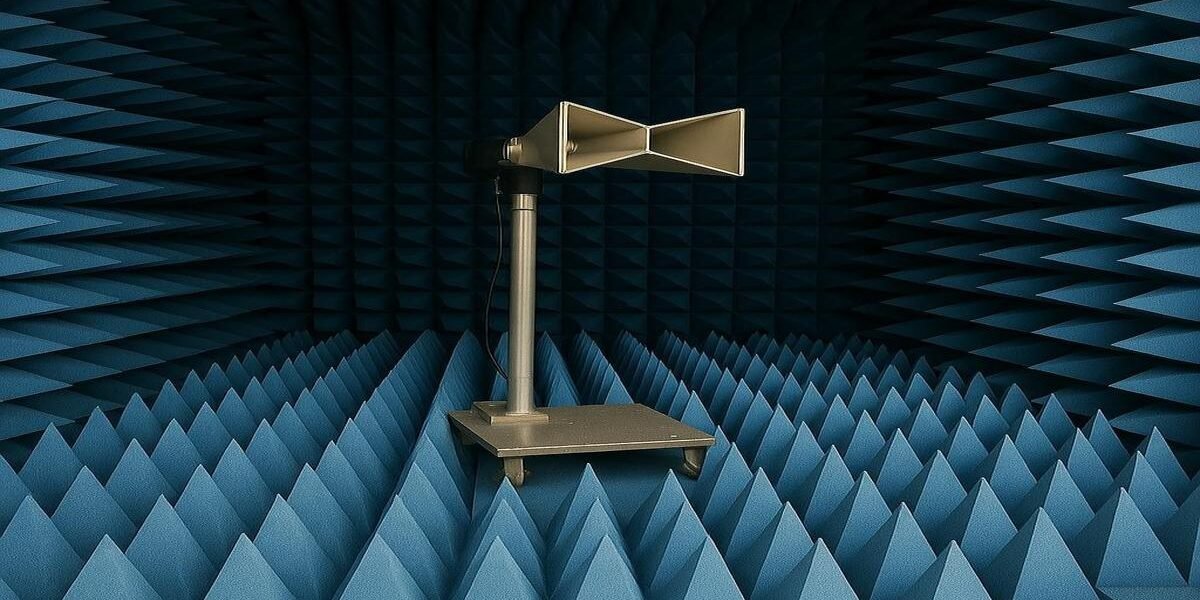RF-shielded rooms are an integral part of electronics and communications testing. RF shielded rooms save external signals and prevent tests from being inaccurate. Engineers use them for EMC (Electromagnetic compatibility) testing and antenna testing.
In this blog, let’s understand what RF-shielded rooms are and why they are important.
What is RF-shielded room?
An RF shield room is a type of room that blocks radio frequency (RF) signals. Metal sheets or special panels are utilized to encase the walls, doors, ceiling, and floor of the room. These block unwanted signals from entering or going out of the room.
These rooms help for testing devices in noise-free surroundings without any external noise. This makes the results original and reliable.
Why Do We Need RF Shielded Rooms?
All electronic devices emit some kind of electromagnetic radiation. If left unchecked, it could interfere with other devices. RF shielded rooms allow the engineers to test what devices really do when under normal conditions with no external interference.
We require these rooms for two main reasons:
- To check if a device will work with other devices (EMC testing).
- To verify how efficiently an antenna receives or transmits a signal (antenna testing).
EMC Testing in Shielded Rooms
EMC testing detects whether a device is receiving or emitting unwanted signals. Devices are required to be completely standards-based so they don’t cause any issues while being used publicly.
Shielded Rooms Assist EMC Testing By:
- Preventing external signals from corrupting the test.
- Ensuring that only the device signals are tested.
- Providing a controlled environment for reproducible results.
RF shield rooms are necessary; otherwise, the test can be inaccurate or misleading.
# Shielded Rooms Enhance Antenna Testing By:
– Removing any external signals in the test area.
– Making precise measurements of gain, radiation pattern, and efficiency.
– Enabling comparison of various antenna designs on an even platform.
Engineers prefer to employ anechoic chambers (a shielded room with an absorbing material lining) to prevent signal reflections inside the room when they operate at their best.
Main Features of RF Shielded Rooms
RF shielded rooms are available in various sizes and shapes. But they have some main features:
– Metal shielding: Blocks entry or exit of radio waves.
– Shielded doors and windows: Seal the room when closed.
– Filtered power lines: Allow passage of electricity without passage of signals.
– Filtering ventilation systems: Allow passage of air without leakage of signals.
– Special sizes and configurations: Designed to meet test needs.
There are also anechoic panels present in some rooms that absorb signals. The panels ensure the room is echo-free for improved test results.
Where Do We Use These Rooms?
RF-shielded rooms are used by numerous industries, such as:
- Electronics and telecom industries
- Medical device testing
- Defense and aerospace industry
- Automobile manufacturers
- Research institutions
These companies require strong and secure test systems, and RF shielded rooms are the answer to meeting that requirement.
Conclusion
RF-shielded rooms are essential in order to test EMC and antennas accurately. They block the signals from the outside and give you a clean environment to test. Whether you have a small sensor or a large antenna, RF shielded rooms allow you to get clear, accurate results. With nearly everything nowadays utilizing wireless signals in today’s world, RF shielded rooms are more important than ever.
Contact DMC today. Let’s see how we can help you achieve the dependable data you require.

